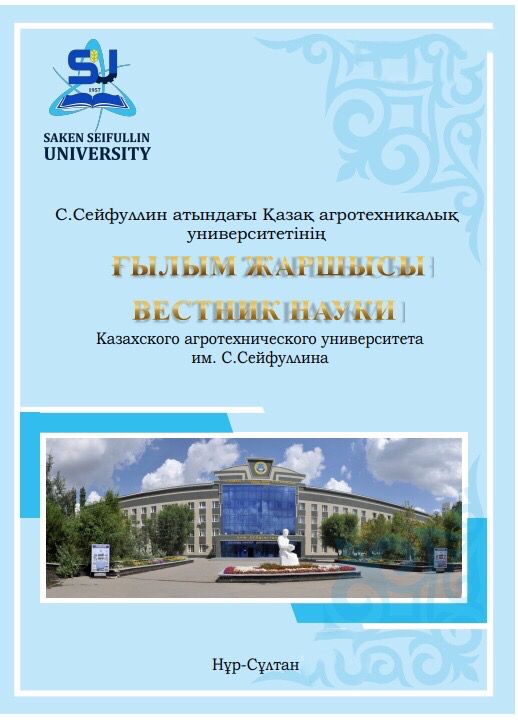DEVELOPMENT OF PRELIMINARY PARAMETERS OF THE OPTIMAL MODEL OF SPRING SOFT WHEAT GRADE FOR CLIMATIC CONDITIONS OF NORTH KAZAKHSTAN
Keywords:
ideal model of a variety, selection, structural analysis, productivity, precipitation, intensive farming, responsiveness to high doses of mineral fertilizers.Abstract
Agriculture in Northern Kazakhstan is developing along the path of intensification, increase, and more complete utilization of soil fertility resources. In this region, spring wheat varieties that are well adapted to local climatic conditions, combining high yields with excellent grain qualities, resistant to lodging, diseases and pests are needed. In the framework of sustainable development of agriculture in the north of Kazakhstan, the cultivation of agrochemically effective varieties is relevant. However, data on the responsiveness of spring wheat varieties to the level of mineral nutrition in the region is not enough. Cultivated varieties of spring wheat in the region belong to an extensive type of development. When creating a model of a variety that meets the
requirements of intensive farming, additional research is needed in the field of theresponsiveness of spring wheat varieties to the introduction of high doses of mineral fertilizers. In this regard, genotypes with a broad reaction rate are quite important for the agronomic practice of Northern Kazakhstan, quite productive in dry years and at the same time as responsive to precipitation in wet years. It shouldbe noted that in the selection of varieties of wheat of the intensive type for rainfed background in the conditions of Northern Kazakhstan, the main focus will be on combining their signs of xerophilia and hygrophilicity.

